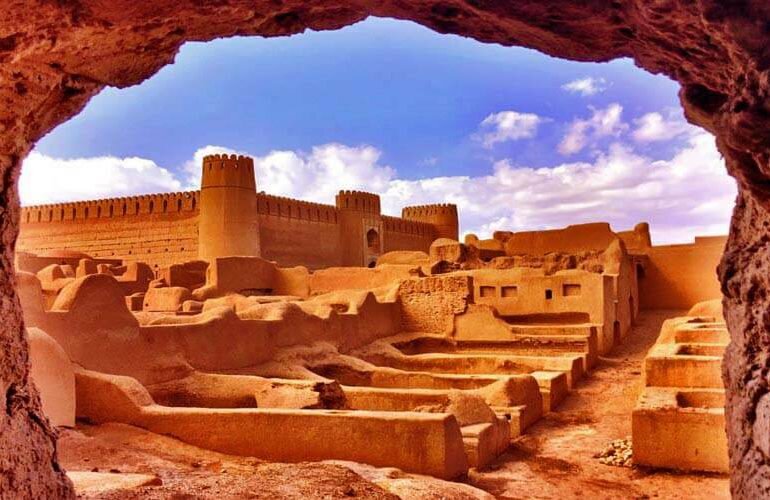Under-restoration citadel of Bam untouched by torrential downpours

TEHRAN – The UNESCO-registered citadel of Bam, whose restoration is still underway after a devastating earthquake in 2003, was unaffected by the recent torrential rains that hit many parts of the Iranian soil.
“No harm inflicted to the citadel of Bam by the recent torrential downpours,” ILNA quoted Kerman province’s tourism chief as saying on Wednesday.
We don’t have any problem in Arg-e (the citadel of) Bam. Even restoration workshops are active in the citadel. Currently, 12 restoration workshops are working in the adobe fortress…,” the official said.
Moreover, the official said the first phase of an anthropology museum will be launched within the next four months.
Situated in a vast desert plateau in the southern reaches of Iran, the citadel rises like a phoenix again from the intimating earthquake after being almost entirely leveled in 2003.
Tracing its origins back to the 6th century BC in the Achaemenid period, the oasis town and citadel of Bam didn’t experience its golden era until much later in the 7th till 11th centuries when it was one of the key stops on the Silk Route transporting goods between Asia, Europe, and West Asia.
Thanks to a series of underground irrigation canals, life was able to flourish in this inhospitable environment and Bam thrived as a trading center – resulting in the Arg-e Bam, the citadel which today is the best (and most photogenic) example of a medieval fortified town built using mud layers.
After the devastating earthquake, heritage experts from within Iran and abroad have worked tirelessly to restore the cultural landscape of Bam including orchards, cisterns, and many ancient buildings – around 23,000 hectares – of which the Bam Citadel is only one small part.
Today, some 99% of the project to save Bam is complete and the citadel is back ready to accept visitors.
According to UNESCO, Arg-e Bam is the most representative example of a fortified medieval town built in vernacular technique using mud layers (Chineh), sun-dried mud bricks (khesht), and vaulted and domed structures.
Bam and its Cultural Landscape represents an outstanding example of an ancient fortified settlement that developed around the Iranian central plateau and is an exceptional testimony to the development of a trading settlement in the desert environment of the Central Asian region. This impressive construction undoubtedly represents the climax and is the most important achievement of its type not only in the area of Bam but also in a much wider cultural region of Western Asia.
The cultural landscape of Bam is an important representation of the interaction between man and nature and retains a rich resource of ancient canalizations, settlements, and forts as landmarks and tangible evidence of the evolution of the area. The UNESCO-designated Bam and its Cultural Landscape is situated on the southern edge of the Iranian high plateau close to the Pakistan border.
AM
Leave a Comment